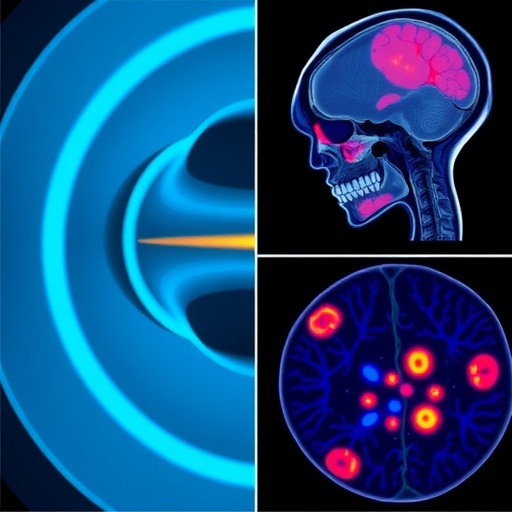A groundbreaking advance in the treatment of solitary fibrous tumors (SFT), a rare and often challenging malignancy, has emerged from recent clinical research conducted at the University Hospital Essen in Germany. This pioneering approach utilizes a novel radioligand therapy, designated as ^90Y-FAPI-46, which targets fibroblast activation protein (FAP)—a cell surface protein abundantly expressed in SFT tumor cells and the associated stromal fibroblasts. Early findings have demonstrated near-complete metabolic remission in three patients, signifying a potential paradigm shift in managing this elusive and refractory cancer type.
Solitary fibrous tumors are a distinctive subset of soft tissue neoplasms that are mostly benign but can exhibit malignant behavior in roughly 15-20% of cases. Conventional therapeutic options for malignant SFT are severely limited, often resulting in suboptimal outcomes and a high rate of treatment failure. The scarcity of effective systemic strategies underscores the urgent need for targeted therapies that can improve both survival and quality of life for patients afflicted with advanced disease.
The biological rationale behind ^90Y-FAPI-46 therapy lies in exploiting the abundant presence of fibroblast activation protein, a serine protease prominently expressed on tumor-associated fibroblasts and some cancer cells within the tumor microenvironment. FAP plays a crucial role in tumor progression by remodeling the extracellular matrix and facilitating invasive growth. By engineering a radiolabeled molecule that selectively binds to FAP, researchers aim to deliver ionizing radiation directly to tumor sites with precision, sparing healthy tissues and enhancing therapeutic efficacy.
In this initial clinical investigation, three patients with advanced solitary fibrous tumors, all of whom had undergone multiple lines of standard treatment without success, were enrolled. Detailed molecular profiling and imaging studies revealed elevated expression of FAP in their tumors, confirmed through cutting-edge positron emission tomography/computed tomography (PET/CT) using ^68Ga-FAPI-46 as a diagnostic tracer. This high FAP expression qualified them as ideal candidates for the therapeutic radioligand approach.
Each patient received four treatment cycles of ^90Y-FAPI-46, a radioisotope labeled compound that emits beta radiation capable of causing localized DNA damage and cell death. Treatment efficacy was assessed using both ^18F-fluorodeoxyglucose (FDG) PET/CT and ^68Ga-FAPI PET/CT imaging modalities, providing complementary insights into metabolic activity and FAP expression dynamics before and after intervention. The results were striking, showcasing substantial tumor shrinkage or disease stabilization in all three individuals.
Clinically, this radioligand therapy also delivered impressive symptomatic relief. Patients reported marked reductions in fatigue, abdominal discomfort, and other cancer-related symptoms, indicating not only tumor control but also improved functional wellbeing. Importantly, the therapeutic regimen was well tolerated, with no serious adverse events documented, highlighting the potential safety profile of this precision radiotherapy modality.
The lead investigators stress that these encouraging outcomes represent a first-in-human demonstration of the deep and durable metabolic responses attainable with FAP-targeted radionuclide therapy in advanced SFT. This validates the concept of theranostics—combining targeted diagnostic imaging with therapeutic delivery in a seamlessly integrated clinical approach—as an effective strategy to combat difficult-to-treat sarcomas.
Given the small cohort and preliminary nature of the data, the research team emphasizes the necessity for expanded prospective clinical trials. Such studies will aim to delineate optimal dosing schedules, long-term safety, mechanisms of resistance, and comparative effectiveness relative to existing therapies. Moreover, identifying biomarkers predictive of response will be essential to personalize treatment and maximize benefits across diverse patient populations.
This innovative therapy also raises exciting possibilities for broader applications beyond solitary fibrous tumors. Since FAP is overexpressed in the microenvironment of multiple tumor types, including various carcinomas and sarcomas, ^90Y-FAPI-46 or analogous agents could be repurposed or adapted as versatile tools in oncology’s expanding arsenal. The integration of molecular imaging to select candidates and monitor response further enhances treatment precision.
The implication of these findings extends into the realm of molecular oncology and nuclear medicine, exemplifying how harnessing tumor biology and advanced radiopharmaceuticals can overcome traditional therapeutic barriers. This approach epitomizes the future of precision medicine, where understanding and targeting the tumor microenvironment is as crucial as attacking the cancer cells themselves.
In summation, ^90Y-FAPI-46 theranostics heralds a promising advancement in managing solitary fibrous tumors, offering hope to patients with limited options. The convergence of innovative radioligand chemistry, state-of-the-art imaging, and clinical application underscores the dynamic evolution of cancer therapy toward more personalized, effective, and tolerable interventions.
Future investigations will continue to evaluate this therapy’s scalability and integration within comprehensive sarcoma treatment paradigms. As clinical evidence accumulates, this targeted radiation approach may redefine standards of care not only for rare tumors like SFT but for a spectrum of malignancies where fibroblast activation protein plays a pivotal role.
The research community eagerly anticipates the results of ongoing and planned trials, which will clarify the full potential and limitations of ^90Y-FAPI-46. Collaborative efforts across nuclear medicine, oncology, molecular biology, and radiopharmacy will be critical to unlock the mechanistic insights and therapeutic innovations necessary to bring this promising agent into mainstream clinical practice.
Strong interdisciplinary partnerships exemplified by this study from the University Hospital Essen and associated cancer research centers illustrate the power of multinational scientific collaboration. The seamless fusion of diagnostic imaging, molecular targeting, and therapeutic strategy exemplifies the clinical translation of bench discoveries, potentially improving outcomes for patients worldwide afflicted by rare and challenging cancers.
Subject of Research: Solitary fibrous tumors; fibroblast activation protein-targeted radioligand therapy.
Article Title: 90Y-FAPI-46 Theranostics Leads to Near-Complete Metabolic Response in 3 Patients with Solitary Fibrous Tumors.
News Publication Date: September 17, 2025.
Web References:
DOI link: http://dx.doi.org/10.2967/jnumed.125.269572
Journal website: https://jnm.snmjournals.org/
Image Credits: Images courtesy of Essen University Hospital, Nuclear Medicine.
Keywords: Molecular imaging, Sarcoma, Radioligand therapy, Fibroblast activation protein, Theranostics, Solitary fibrous tumor, Precision medicine, Nuclear medicine, PET/CT imaging, Targeted radionuclide therapy, ^90Y-FAPI-46, Cancer therapy.




